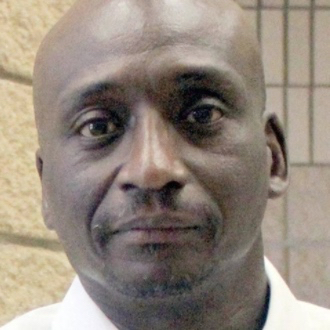Rascals case in brief
In the beginning, in 1989, more than 90 children at the Little Rascals Day Care Center in Edenton, North Carolina, accused a total of 20 adults with 429 instances of sexual abuse over a three-year period. It may have all begun with one parent’s complaint about punishment given her child.
Among the alleged perpetrators: the sheriff and mayor. But prosecutors would charge only Robin Byrum, Darlene Harris, Elizabeth “Betsy” Kelly, Robert “Bob” Kelly, Willard Scott Privott, Shelley Stone and Dawn Wilson – the Edenton 7.
Along with sodomy and beatings, allegations included a baby killed with a handgun, a child being hung upside down from a tree and being set on fire and countless other fantastic incidents involving spaceships, hot air balloons, pirate ships and trained sharks.
By the time prosecutors dropped the last charges in 1997, Little Rascals had become North Carolina’s longest and most costly criminal trial. Prosecutors kept defendants jailed in hopes at least one would turn against their supposed co-conspirators. Remarkably, none did. Another shameful record: Five defendants had to wait longer to face their accusers in court than anyone else in North Carolina history.
Between 1991 and 1997, Ofra Bikel produced three extraordinary episodes on the Little Rascals case for the PBS series “Frontline.” Although “Innocence Lost” did not deter prosecutors, it exposed their tactics and fostered nationwide skepticism and dismay.
With each passing year, the absurdity of the Little Rascals charges has become more obvious. But no admission of error has ever come from prosecutors, police, interviewers or parents. This site is devoted to the issues raised by this case.
On Facebook
Click for earlier Facebook posts archived on this site
Click to go to
Today’s random selection from the Little Rascals Day Care archives….
Click for earlier Facebook posts archived on this site
Click to go to
Today’s random selection from the Little Rascals Day Care archives….
Double-decker graves, portable crematoriums… and so on
Feb. 22, 2013
“The argument for an organized network of satanists is virtually irrefutable. Ritual abuse survivors’ reports contain many fantastic elements. Rather than regard the implausible features of these accounts as grounds for skepticism, however, proponents of the satanic conspiracy theory insist that it is precisely these elements than mean the stories must be true. No one, they insist, would or could make up such bizarre, macabre stories.
“Sometimes proponents retreat to the position that satanists commit bizarre activities precisely so that victims will not be believed when they recount their experiences. This latter tack illustrates the problem of infinite regress (a sequence of reasoning or justification that can never come to an end).
“When confronted with the difficulty of concealing so many homicides, proponents explain that satanists dispose of bodies… in double-decker graves. Challenges to this argument lead to assertions that bodies are burned. The observation that bodies cannot be burned in ordinary fires leads to the assertion that they are cremated. The problems of gaining access to crematoriums lead to contentions that satanists use special portable crematoriums. Further protestation may yield the argument that child-witnesses may be mistaken about some deaths because satanists sometimes use life-like dolls rather than live humans to terrorize children into silence.
“The continual retreat from the lack of confirming evidence shifts the burden of proof from those seeking to demonstrate a satanist network to those questioning such assertions.”
– From “The Satanism Scare,” edited by David G. Bromley (1991)
‘We cannot give him back those years….’

newsobserver.com
Edward Charles McInnis
May 29, 2016
“ ‘On behalf of the State of North Carolina, I apologize to Mr. (Edward Charles) McInnis for the 27 years he had to spend behind bars for crimes he did not commit,’ McCrory said in a statement announcing the pardon. ‘While we cannot give him back those years of his life, I wish him well as he resumes his life as a free man.’ ”
– From “NC Gov. McCrory pardons Scotland County man” by Anne Blythe in the News & Observer (May 19) (text cache)
Another DNA exoneration – thanks yet again, North Carolina Innocence Inquiry Commission – and this time both District Attorney Kristy Newton and Gov. McCrory acted expeditiously and humanely.
I look forward to seeing the governor extend such sentiments toward Junior Chandler, who has now spent more than 29 years behind bars.
![]()
Montaigne and St. Augustine, of course, were never DAs
 Jan. 27, 2012
Jan. 27, 2012
In “The Science of Conjecture: Evidence and Probability Before Pascal” (2002), James Franklin points out that Montaigne opposed witch trials for their lack of evidence.
“I am of St. Augustine’s opinion,” Montaigne wrote, “that ‘ ’tis better to lean towards doubt than assurance, in things hard to prove and dangerous to believe’….
“After all, ’tis setting a man’s conjectures at a very high price, upon them to cause a man to be roasted alive.”
If only reality had offered such vivid details….
 Jan. 9, 2013
Jan. 9, 2013
“One question that arises from studies on children’s suggestibility is whether they document false memories or merely false reports. Do children really believe that the fictional events happened? Or do they merely say so to please the interviewers?
“Consistent with the false memory interpretation, approximately one-third of the children in these studies continued to insist that particular events had really happened to them even after they were told those events were not real….
“Lacking any obvious motivation to lie, these children appeared to have developed false memories, perhaps confusing the products of their repeated attempts to visualize the events with the products of direct experience….
“Professionals were no better than chance at discriminating false from true reports. The credibility of a child’s account was related to the amount of perceptual detail mentioned in the child’s narrative. The more details, the more professional tended to believe the narrative, regardless of whether it was true.”
– From “Remembering Trauma” by Richard J. McNally (2003)
To better understand how the Little Rascals therapists went so wildly astray, give that last paragraph a second reading. “Professionals were no better than chance at discriminating false from true reports” – and they were mesmerized by the “perceptual detail” in those tales of sharks and spaceships.











0 CommentsComment on Facebook